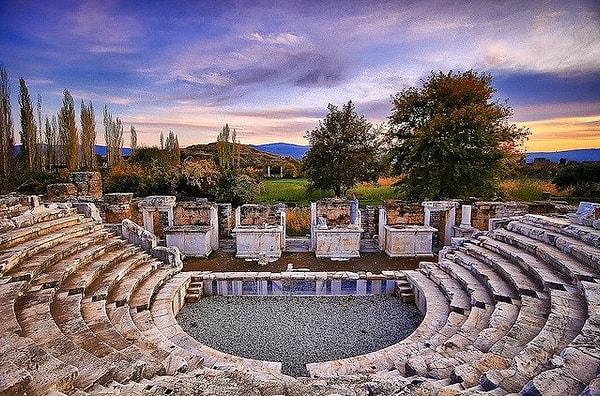Alabanda, a remarkable ancient city located in the Aydın Province of Turkey, is a site steeped in history and architectural wonders. Established during the Hellenistic period, Alabanda was a prominent city within the ancient region of Caria, which thrived under various empires such as the Seleucids, Pergamon, and Roman Empire. Over the centuries, Alabanda was known by several names, including Antiochia of the Chrysaorians and later as Antiochia on the Maeander.
Alabanda's ruins, which can be explored today, reveal a rich tapestry of architectural styles and influences, reflecting the city's diverse cultural heritage. Among the most notable remnants are the ancient agora (marketplace), the Hellenistic and Roman temples dedicated to Zeus, Apollo, and Artemis, and the well-preserved theater, which once accommodated up to 8,000 spectators. Additionally, the site showcases numerous examples of Roman-era public buildings, including a gymnasium, a council house (bouleuterion), and bath complexes. The city's necropolis, with its elaborate rock-cut tombs, also attests to the wealth and status of Alabanda's inhabitants. As a testament to its enduring legacy, Alabanda continues to captivate historians, archaeologists, and visitors alike, serving as a window into the fascinating history of the ancient world.



